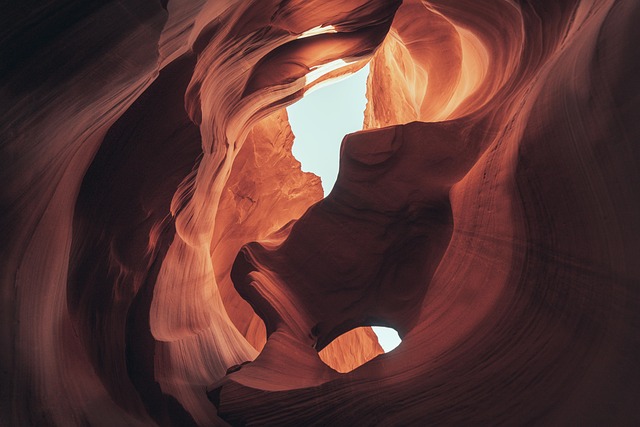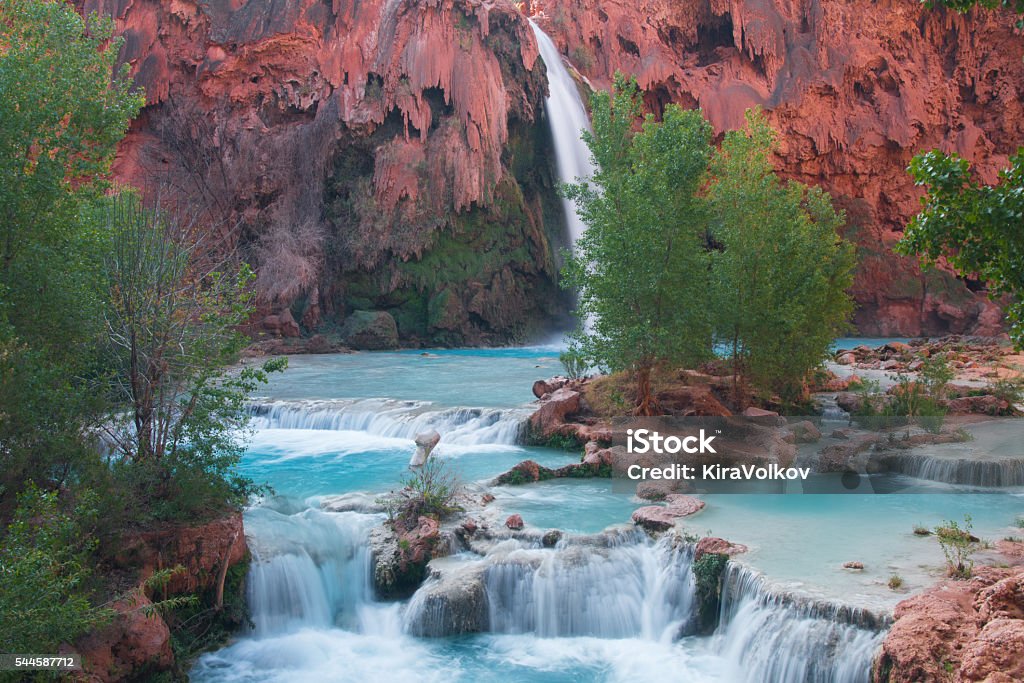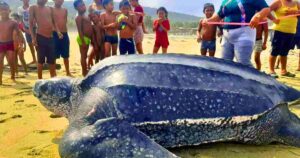It’s the most exclusive and rewarding adventure in the American Southwest. A 10-mile trek through a dusty red-rock canyon that suddenly opens up into a jaw-dropping oasis. Here, Havasu Creek, a ribbon of impossibly bright, turquoise-blue water, flows through a series of world-famous waterfalls and travertine pools.
This is not a national park. It is the sacred and sovereign land of the Havasupai Tribe, which means “People of the Blue-Green Water.”
A trip to Havasu Creek is a true bucket-list expedition, but it’s also a complex and physically demanding one that requires meticulous planning. You can’t just drive up to a viewpoint.
This is your ultimate guide to planning the perfect Havasu Creek adventure.

What (and Where) Is Havasu Creek?
Havasu Creek is a tributary of the Colorado River, located in a remote side-canyon of the Grand Canyon in Arizona. The entire area is part of the Havasupai Indian Reservation.
The source of the creek is Havasu Spring, which gushes water rich in calcium carbonate and other minerals. These dissolved minerals are what give the water its brilliant turquoise color by reflecting sunlight. This mineral-rich water is also what creates the waterfalls and pools, as it deposits layers of travertine rock over thousands of years.
The Legendary Waterfalls of Havasu Creek
The 10-mile hike from the trailhead at Hualapai Hilltop first takes you to the village of Supai, the most remote community in the lower 48 states (it’s still serviced by mule train). From there, the magic truly begins.
The waterfalls appear in succession as you hike down-canyon from the village.
- Fifty Foot Falls & New Navajo Falls: The first major falls you’ll encounter. After a flood in 2008, these “new” falls were born and are a stunning, complex area of cascades and perfect swimming holes.
- Havasu Falls: This is the icon. A breathtaking 100-foot-tall plume of blue water plunges into a wide, idyllic amphitheater and a series of perfect turquoise pools. The Havasu Creek Campground is located just beyond it.
- Mooney Falls: Located at the far end of the campground, Mooney is a terrifying and thrilling spectacle. At 200 feet, it’s twice as tall as Havasu Falls. Accessing the bottom requires a challenging “climb” down a series of slippery, mist-soaked tunnels, chains, and ladders.
- Beaver Falls: For those willing to adventure another 3-4 miles past Mooney Falls, your reward is Beaver Falls. This is not a single plunge but a gorgeous series of smaller, terraced cascades that spill from one wide pool to the next.

How to Visit Havasu Creek: The Permit Is Everything
This is the most important rule: You MUST have a permit to visit. No exceptions.
There is no day hiking. All Havasupai permits are for a 4-day / 3-night reservation, and you must choose between the Campground or the Lodge.
The Havasupai Permit System (The Lottery)
Securing a permit is famously difficult and has been compared to winning the lottery.
- When: Permits for the entire season (February – November) are sold once per year, typically on February 1st at 8:00 AM Arizona Time.
- Where: The only place to get permits is the official Havasupai Reservations website.
- How: You must create an account on the website before the sale date. On opening day, tens of thousands of people log on at the same time to try and secure a reservation. They are usually sold out for the entire year within minutes.

The Two Ways to Stay
- The Campground: This is the most common permit. The campground is a beautiful, 1-mile-long, “find-your-own-spot” area located between Havasu Falls and Mooney Falls. It has basic composting toilets and a fresh spring for water.
- The Lodge: The Havasupai Lodge is a simple, 24-room hotel located in the village of Supai, about 2 miles from Havasu Falls. These reservations are sold separately from the campground permits (also on Feb 1) and often sell out just as quickly.
The Hike: What to Expect
Once you have your permit, the real challenge begins.
- Trailhead: The hike starts at Hualapai Hilltop, a remote parking lot at the end of Indian Road 18. It’s about 4-5 hours from Las Vegas or Phoenix. There are no services here besides a basic toilet.
- The Descent (10 Miles):
- Miles 1-1.5: A steep, 1,000-foot descent down a series of switchbacks.
- Miles 1.5-8: A long, slow, gradual descent through a dry, gravelly canyon wash.
- Miles 8-10: You finally reach the village of Supai, check-in for your permit, and then hike the final 2 miles to the campground and Havasu Falls.
- The Ascent (The Hard Part): The 10-mile hike out is the real test. You must hike back up the long canyon wash and finish with the brutal 1,000-foot switchback climb, all with your full pack.
Warning: You MUST start your hike out before sunrise. Hiking in the canyon after 10 a.m. in the warmer months is dangerously, often lethally, hot.
Can You Use the Mules or Helicopter?
- Mules: The tribe offers a mule service to carry your bags (not you). You must reserve this in advance, and it is a separate fee.
- Helicopter: A helicopter service is available on certain days, primarily for tribe members. Tourists can sometimes get a seat, but it is not guaranteed, the lines are long, and it should not be your primary plan.
When to Go: The Best Time for Havasu Creek
- March-May (Spring): Often considered the perfect time. The weather is pleasant for hiking, and the water (while chilly) is refreshing.
- June-August (Summer): This is monsoon season. The days are extremely hot (100-115°F / 38-46°C), and there is a very real and serious risk of flash floods, which can be deadly. Be prepared for intense heat.
- September-November (Fall): Another ideal window. The monsoon risk lessens, and the temperatures become pleasant again, though the nights get cold.
Essential Packing List
Packing light is critical, but you must be self-sufficient.
- Broken-in Hiking Boots: Your #1 priority.
- Hiking Pack (Backpack): A 40-60 liter pack is ideal.
- Water Shoes: Do not skip this. You’ll wear these 80% of the time exploring the creek (Tevas, Chacos, or closed-toe Keens are perfect).
- Lightweight Camp Gear: Tent, sleeping bag, sleeping pad.
- Food for 4 Days: Lightweight, high-calorie meals (dehydrated meals, bars, nuts).
- Water Bladder (3L): And a water filter (like a Sawyer Squeeze) for the campground spring.
- Headlamp: Essential for the campground and hiking out in the dark.
- Swimsuit & Quick-Dry Towel
- Sunscreen, Hat, and Sunglasses
- First-Aid Kit
A Final, Crucial Reminder: You Are a Guest
Havasu Creek is not a public park; it is a private reservation and the Havasupai Tribe’s home. You are a guest.
- Pack It In, Pack It Out: You must carry ALL of your trash back out with you. Do not leave anything.
- Be Respectful: Be courteous to the tribe members you meet in the village.
- No Drones, No Alcohol, No Drugs: These are all strictly prohibited and will result in you being expelled.
- Stay on the Trail: Do not venture off the main trails.
A trip to Havasu Creek is the adventure of a lifetime. It is a place that truly lives up to the hype, rewarding every drop of sweat it takes to get there with views you will never forget.
Have you been to Havasu Creek, or is it on your bucket list? Share your questions or tips in the comments below!


